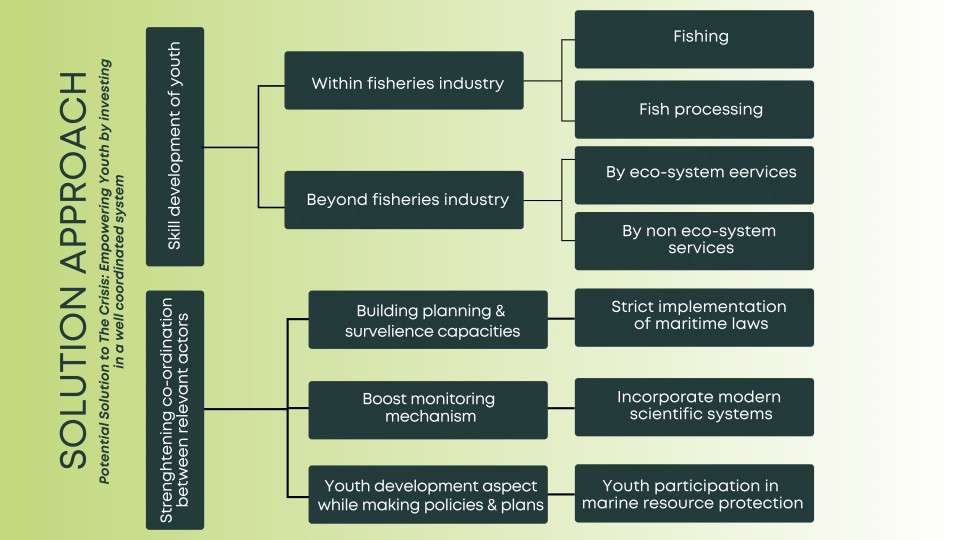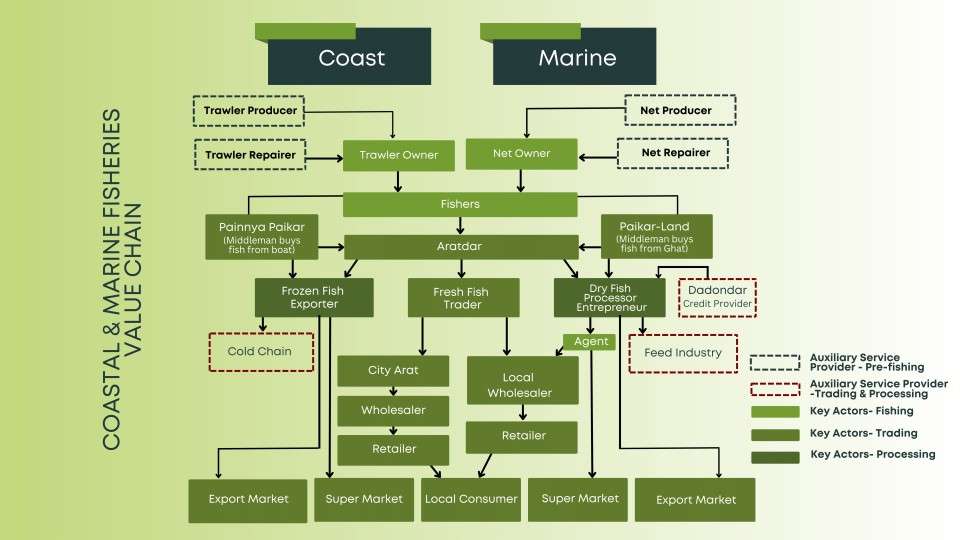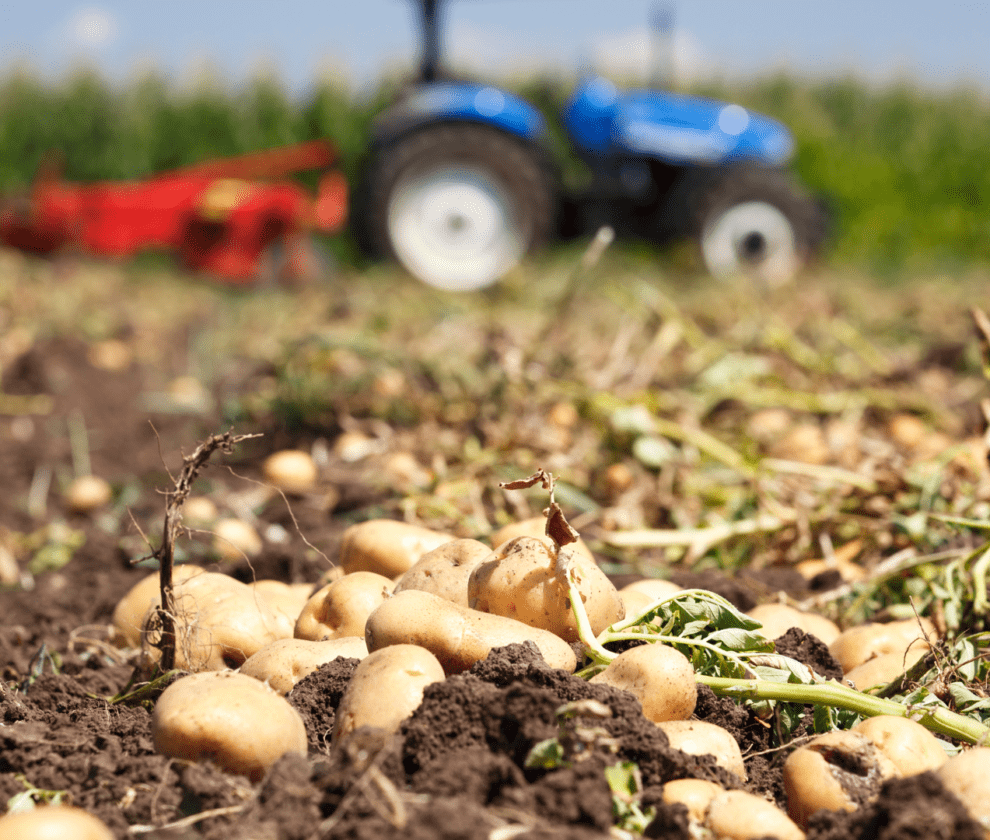With a population of 44 million, the coastal regions’ inhabitants are directly affected by the degradation of the marine ecosystem as their livelihoods heavily rely on marine fishing and related activities. Despite ranking 3rd globally in freshwater fish production and 11% contribution in freshwater fish production over three decades, the sustainability of these communities is at risk due to unsustainable practices.

The coastal ecosystem, including the Sundarbans and the Swatch of No Ground, is subject to intense exploitation by fisheries. Open rivers and water bodies are dwindling rapidly, impacting the habitats of indigenous fish species and other aquatic animals. Factors such as unplanned urbanization, encroachment, and siltation further exacerbate the situation.
According to the IUCN’s Red List in 2015, 64 out of 253 freshwater fish species in Bangladesh are threatened, with 9 classified as critically endangered, 30 as endangered, and 25 as vulnerable. However, the immediate concern lies in the consequences these unsustainable practices have on the coastal communities & achieving sustainable development requires a well-planned approach that takes into account the current state of these communities’ livelihoods and the associated fish value chain.
Livelihood, Poverty and Burdened Ecosystem: An interconnected crisis
Efforts to reduce poverty among the coastal population face sustainability challenges. Shrimp farming, a prominent initiative, has become unsustainable in the southwest region due to high salinity levels. However, this practice is heavily concentrated in Satkhira, Khulna, and Bagerhat, accounting for 80% of Bangladesh’s saltwater shrimp production. Unfortunately, the expansion of shrimp farming has negatively impacted other sectors, notably the rice industry. Crop yields have suffered, and fewer job opportunities are available as shrimp farming requires less labor. Moreover, the scarcity of pastoral lands, with 80% of farmers leasing their land for shrimp farming, has hindered livestock rearing. Consequently, shrimp production has not only affected other sectors’ sustainability but has also increased communities’ vulnerability to poverty.
Limited livelihood: In coastal communities it leads to ongoing poverty. These communities heavily depend on fishing and tourism at the same time they face geographical isolation and limited access to essential services such as education. Consequently, children are forced into dangerous working conditions, including involvement in the supply chains of seafood products, perpetuating child labor in these areas.
The limited skill development: In coastal communities it adversely affects their economic prosperity, leading to poverty. These communities heavily depend on fishing as their main income source, especially during the fishing season. However, due to the short duration of fishing and the lack of alternative economic options, they face additional difficulties. To cope with the financial crisis during the off season, they often engage in excessive fishing, straining marine resources for extra income. This overexploitation poses risks to fish stocks, impacting the ecosystem and the long-term sustainability of their livelihoods.
These multifaceted challenges at hand contribute to the poverty and deprivation of fundamental educational opportunities, leading youths to a limited understanding of the significance surrounding marine conservation and the sustainable utilization of resources. Thus, marine ecosystems are being exploited and conservation has become difficult.
Potential Solution to The Crisis: Empowering Youths and establish well coordinated system

Figure: Solution approach
Targeting the previous generation would not be practical to solve the aforementioned issue because of their long-held traditional beliefs, which to some extent impede their forward-thinking. Young people are therefore the primary target demographic. There may be a two-dimensional approach to the problem. The first dimension includes tackling the knowledge gap among the youthful people in coastal zones as well as skill development. The other dimension includes strengthening the coordination of relevant actors for the protection and sustainable use of the Sundarbans and Swatch of No Ground (SoNG) marine protected area.
The skill development approach can occur within the fish value chain or beyond the industry. There is a need to empower youths with global standards for sustainable fishing. In addition, fish processing is a booming industry. Bangladesh generated a total revenue of $533 million from the export of fish, shrimp, and other fishery products, which accounted for more than 1 percent of the country’s overall export earnings during 2021-22 fiscal year. Hence acquiring skills related to this industry will create new paths of livelihood specially during off-season when fishing is restricted. Skill development beyond the fish industry has two dimensions. Benefits can be derived from Ecosystem services such as skill development in salt extraction, extraction of forest products and their processing (honey, wax etc), boat carpentry etc. Non ecosystem services can have many other options other than related to natural resources.
Finally, a coordinated approach from relevant actors is much needed to ensure the protection of marine ecosystems e.g The Sundarbans and SoNG area. This includes strict implementation of marine laws, introducing scientific monitoring systems and having youth development as a key consideration in the mandates of protecting marine resources.
Fish Value Chain: An economic circle encompassing millions of coastal people
To understand the youth’s engagement in the fish value chain, it is important to understand the value chain process first. Beginning with the capture of marine fish species from the diverse coastal waters, the value chain extends through various activities. The pre-fishing stage mostly includes preparatory works for capturing fishes e.g making fish nets, big bowls to store fish and repairing boats and trawlers. The stakeholders related to this stage are Trawler producer Trawler Repairer, Net producer, net repairer. The fishing stage is basically the act of capturing fish where majhi steers the boat or trawler and fisherman catches the fish. Key actors of this stage are trawler and Net owners and Fishermen. The final phase in post-fishing which is categorized into two main blocks : Processing and Trading. The blocks operate through a set of intermediaries performing commercial functions in a chain known as Painnya Paikar, Paikar (land), Commission agent (Aratdar), wholesaler (Paikars), Fresh fish traders. These actors are mainly associated with the on-site trading of the fish. The off-site trading mainly includes Aratdar in towns and cities, Wholesaler and Retailers.

Figure: Coastal and Marine fisheries value chain
From on-site trading, a part of the captured fish goes for processing. Processing includes cold storage, processing plants for ready-to-eat fish products and dry fish. The waste produced in dry fish processing plants further goes into the feed industry. The final products (Raw fish and processed fish products) reach both export and local markets.




